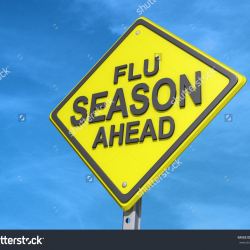
Flu Vaccine Updates for 2016-2017
October marks the beginning of flu season, which means it is time to get a flu shot. The flu season spans the months of October to May, so the ideal time to get vaccinated is before the end of October. In the United States alone, influenza-related deaths have been estimated to be 3,349 - 48,614 annually, depending on the year. The influenza vaccine is our best defense against this potentially deadly virus.
Because the flu virus frequently undergoes mutations, a new vaccine must be formulated each year. The Centers for Disease Control and Prevention (CDC) uses prevalence data from preceding months to determine which strains of influenza virus are included in the vaccine. The effectiveness of the flu shot depends on how well that year’s vaccine matches the circulating virus types.
Influenza A and B are the two viruses responsible for yearly flu outbreaks. The trivalent vaccine protects against three influenza subtypes (two of A and one of B), whereas the newer, quadrivalent vaccine protects against four subtypes (two of A and two of B).
The CDC has issued immunization guidance for the 2016-2017 flu season with a few changes worth noting:
No more FluMist: The live-virus vaccine/nasal spray, commonly known as FluMist, is no longer recommended. This is because of its low efficacy against the influenza A virus (H1N1 subtype) during the previous year. Hence, all currently recommended flu vaccines are in the form of injections.
Age 65 or older: Older adults have a weaker immune response to the flu vaccine and also have the highest mortality rate associated with the flu virus. Fortunately, there is a new vaccine available to those of age 65 or older called “Fluad”. This is a standard dose, trivalent vaccine containing an adjuvant called MF59, which promotes a higher immune response than the conventional flu vaccine. A previously licensed high-dose trivalent vaccine, called Fluzone, will still be an option for the same age group. This high dose vaccine contains 4 times the viral antigen of a standard flu shot, which produces a higher immune response.
Egg allergy: Most flu vaccines consist of inactivated viruses that are grown in chicken eggs, which means the flu shot may contain traces of egg protein (ovalbumin), but studies have shown that severe egg allergies related to the flu vaccine are unlikely. According to the CDC, people with an egg allergy can safely take any age-appropriate flu shot and no longer need to be watched by a provider for 30 minutes after getting vaccinated. The CDC now recommends that only persons with severe egg allergy (not hives) get vaccinated in the presence of a health care provider in a medical setting such as a hospital or clinic.
Cell-based vaccine: There is now a new vaccine called Flucelvax, which is grown in animal cells, rather than in eggs; it is recommended for ages 4 and older. Because the manufacturing of this vaccine begins with a virus derived from an egg source, it is not considered 100% egg-free. On the other hand, there is a vaccine called Flublok, which is made with recombinant technology and only contains protein from a virus grown in animal cells, making it 100% egg-free; it is licensed for ages 18 and older.
Of note, the CDC does not endorse any particular type of flu vaccine over another and strongly recommends getting immunized with whichever age-appropriate vaccine is available, barring individual contraindications.
